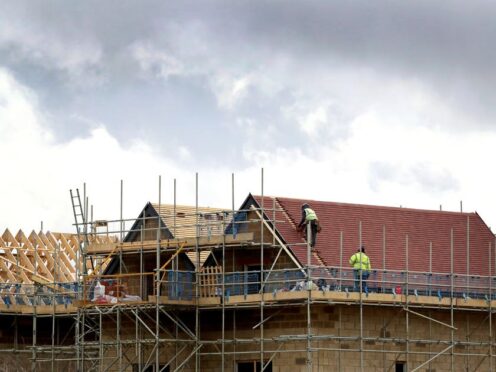Most councils risk failing to deliver a boost for nature linked to new housing developments in their areas, conservationists have warned, as new rules come in.
From next week, planning rules that require developers to create new habitats as part of building projects to deliver an overall 10% boost to nature – known as “biodiversity net gain” – come into force in England.
The rules will see developers required to take steps such as creating new woodland and restoring natural wetland areas, where possible within the project itself.
Conservation groups say the measures – if done well – could help declining nature ranging from hazel dormice to meadows, as well as deliver benefits such as increasing people’s access to green space and reducing flooding.
But while it welcomed the introduction of the rules, the Wildlife and Countryside Link (WCL) coalition of nature organisations called on the Government to support councils to deliver more with the policy.
The WCL warned that the Government impact assessment of the policy suggested the mandatory requirement of 10% net gain for nature may only achieve “no net loss”.
As a result, councils would have to go further than the 10% target – something they are permitted to do – to ensure developments do more than simply “offset” the harm to nature they cause, but only a handful of local authorities are planning to do so, WCL said.
Based on Freedom of Information requests and data gathered from 317 local authorities in England, just 26 councils (8%) have either committed to or are considering setting requirements for net gain above the mandatory 10%.
The WCL said “frontrunner” councils included London’s Tower Hamlets and Kingston upon Thames, where policies to deliver a 30% net gain for nature were being proposed, while local authorities ranging from East Devon and Wiltshire to Birmingham were consulting on or planning 20% requirements.
Richard Benwell, chief executive of the WCL, said: “We really welcome the introduction of mandatory net gain.
“Done well, it could help turn around the decline of species and habitats, from dormice and red squirrels to meadows and woodlands, and give communities more natural spaces to enjoy. ”
But he described the law as “too lenient”, and raised concerns about local authorities’ capacity to enforce the rules, warning “there’s real concern that net gain will only amount to a glorified offsetting scheme”.
He urged: “While 10% may help prevent a decline, Government must support much higher ambitions to restore nature.”
Rebecca Pullinger, from the Woodland Trust, a WCL member organisation, said: “Nature is in crisis, with, for example, just 9% of our woods in good ecological condition.
“We need an ambitious approach to turn this around.
“Done well, biodiversity net gain could be part of this, but a 10% gain is not enough.
“Government must empower local authorities to raise the bar – by providing clear guidance to local authorities on how this can be done.”
An Environment Department (Defra) spokesperson said: “Biodiversity net gain will ensure that new developments work for both wildlife and people.
“To achieve this, we are working closely with local authorities and have provided over £25 million to support them ahead of its implementation.
“We estimate that introducing a mandatory 10% gain will create areas of habitat the size of Bromley every year while striking the right balance for developers and positive outcomes for nature.”
